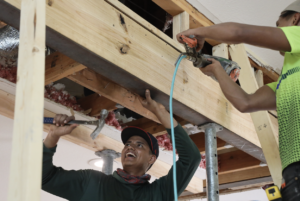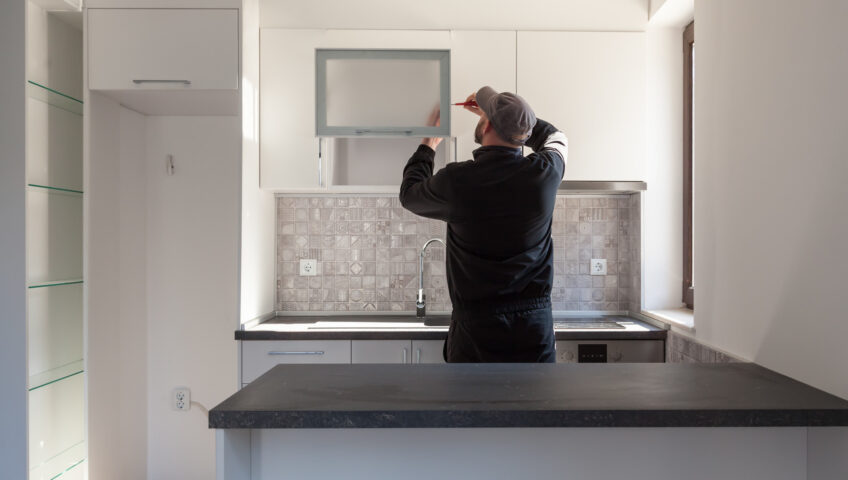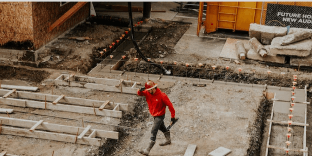
Safety Measures During Load-Bearing Wall Removal
Removing a load-bearing wall can be a great way to create more space and light in your home or office. Who doesn’t want to wake up in the morning and greet the view that you probably invested in – and at the end of the day – close your computer, device, book or other, and appreciate the great outdoors from the comfort of your home?
However, it can also be a risky and complex project that requires careful planning and execution. A load-bearing wall is a wall that supports the weight of the structure above it, such as the roof or the floor. This could be in your basement, in your social spaces, your bedrooms or any other spaces.
Removing or altering a load-bearing wall without proper assessment and planning can have serious consequences, such as damage, collapse, or injury. That’s why safety measures are not just optional but essential when dealing with load-bearing wall removal.
The Risks of DIY Approaches
Some homeowners or property owners may be tempted to remove a load-bearing wall by themselves, without consulting a professional or following safety guidelines. Let’s stop here. Don’t do it. This can be a dangerous and costly mistake, as it can compromise the safety and integrity of the structure. A couple of reasons:
Lack of Expertise
One of the common mistakes made by DIY enthusiasts is that they lack the expertise and knowledge to identify and evaluate load-bearing walls. They may rely on visual cues or assumptions that are not accurate or reliable. For example, they may think that a wall is not load-bearing because it is made of plaster or wood, or because it does not run along the center of the house. However, these are not definitive indicators and should not be relied upon without consulting a structural engineer.
Another common mistake is that they lack the expertise and knowledge to design and implement alternative support solutions. They may think that they can simply remove a load-bearing wall and replace it with a beam or a column without considering the structural implications. However, this can result in inadequate or improper support that can cause structural instability or failure.
The Cost of Errors
There’s a lot of pride and creativity in those that take on DIY projects. You get to walk past something in your home and say, “I did that.”
We’re here to be the naysayers. The cost of errors made by DIY enthusiasts can be significant, both financially and structurally. They may face legal issues and fines if they fail to obtain the necessary permits and approvals from their local authorities for their project. They may also face liability claims from their neighbors, their homeowner’s association, or their insurance company if they cause damage or injury to others.
Moreover, they may face structural damage and repair costs if they compromise the strength and safety of their structure. They may create cracks, sagging, bulging, or leaning in their walls, floors, ceilings, or roofs. We can’t have that. They may also void their warranty or insurance coverage if they do not follow the codes and standards.
Pre-Removal Safety Measures
Before removing a load-bearing wall, there are several safety measures that must be taken to ensure a successful and safe project. These include:
Consult a Structural Engineer
The first and most important step in removing a load-bearing wall is to consult a licensed structural engineer who specializes in residential construction. A structural engineer can help you determine if a wall is load-bearing or not, and what impact it will have on the structure if you remove or modify it. A structural engineer can also provide you with recommendations, solutions, and costs for your project.
For example, if you want to remove a load-bearing wall to create an open floor plan, a structural engineer can advise you on how to replace it with an alternative support system, such as a beam, a column, or a post. A structural engineer can also help you obtain the necessary permits and approvals from your local authorities for your project. You’ll still have the same end result – and hopefully, with lower costs and effort.
Secure Necessary Permits
Many local building codes require permits for structural alterations, such as the removal of load-bearing walls. Prior to starting any work, it’s always good to contact your local building department and obtain the required permits. There are many easily accessible sites to find related to your area. Not a step to skip, but again – we can help.
Prepare the Area
Before removing a load-bearing wall, it is important to prepare the area where the work will take place. It’s time to clean – double bonus on the productivity list. This involves clearing the area of any furniture, appliances, decorations, or other items that may obstruct or interfere with the work. It also involves isolating the area from other parts of the house or office to prevent dust, debris, noise, or accidents from affecting other people or pets.
Safety Measures During the Removal
During the removal of a load-bearing wall, we have a couple of important safety measures. These include:
Use of Proper Tools and Equipment
It is essential to use proper tools and equipment when dealing with load-bearing wall removal. These include:
- Reciprocating saw: A reciprocating saw is an electric saw that can cut through various materials such as wood, metal, plaster, or drywall.
- Jackhammer: A jackhammer is an electric or pneumatic tool that can break through concrete, brick, stone, or tile.
- Hammer and chisel: A hammer and chisel are manual tools that can chip away at mortar, plaster, or drywall.
- Pry bar: A pry bar is a metal tool that can pry apart boards, studs, or nails.
- Drill and bits: A drill and bits are electric tools that can make holes in various materials such as wood, metal, or concrete.
- Level: A level is a tool that can measure the horizontal or vertical alignment of a surface or an object.
- Tape measure: A tape measure is a tool that can measure the length, width, or height of a surface or an object.
Protective Gear
Don’t worry, you’ll look great. But, it is also essential to wear protective gear when dealing with load-bearing wall removal. These include:
- Goggles: Protect your eyes from dust, debris, or sparks.
- Gloves: Pick out the right ones so you can protect your hands from cuts, abrasions, or burns.
- Mask: Your mask will protect your nose and mouth from dust, fumes, or particles. Here are some good examples.
- Earplugs: Earplugs are ear inserts that can protect your ears from noise or pressure. Do some research on this one, since ear plugs can fit everyone differently.
- Helmet: If you’re working with any sort of tools, machinery, we highly recommend that you take advantage of a good helmet. See what works best for you and your project.
- Boots: We’re talking about the industrial kind so you protect your feet from punctures, slips or falls. Believe us, they’ll be a good investment regardless.
Team Communication
Another important safety measure during load-bearing wall removal is clear and constant communication among anyone involved. With proper communication, you ensure success – coordinating the work and avoiding any misunderstandings or mistakes. Communication also helps alert each other of any hazards or emergencies.
Post-Removal Safety Checks
After removing a load-bearing wall, there are some safety checks that must be done to ensure the structural integrity and cleanliness of the area. These include:
Structural Integrity
After removing a load-bearing wall, it is important to inspect the remaining structure to ensure its integrity and stability. This involves checking for any cracks, sagging, bulging, or leaning in the walls, floors, ceilings, or roofs. It also involves checking for any gaps, misalignments, or looseness in the joints, fasteners, or anchors.
Cleanup and Debris Removal
After removing a load-bearing wall, it is also important to remove any debris and clean the area thoroughly. It’s time to, vacuume, wipe, and wash any dust, dirt, plaster, mortar, concrete, wood, metal, or other materials that may have been generated during the work.
When Things Go Wrong
It happens. In case of an emergency or accident during the work, there are some steps you should take to ensure safety and minimize damage.
Emergency Protocols
In case of an emergency or accident during load-bearing wall removal, such as fire, explosion, collapse, injury, or electrocution:
- Stop the work immediately and turn off any power sources.
- Call 911 or your local emergency services and report the situation.
- Evacuate yourself and others from the area if possible and safe to do so.
- Provide first aid to yourself or others if needed and trained to do so.
- Follow the instructions of the emergency responders and cooperate with them.
Insurance and Liability
In case of an emergency or accident during load-bearing wall removal that results in damage or injury to yourself or others:
- Contact your insurance company and report the incident.
- Provide them with any relevant information and documentation such as permits, contracts, receipts, photos, etc.
- Follow their claims process and cooperate with them.
- Contact your lawyer if needed and seek legal advice.
It’s always important to be safe and smart – especially when it involves your property and those around it. By following these measures before, during and after the work you can ensure safety quality and value for your project. Always consult with professionals (like us) and local authorities to ensure full compliance.


